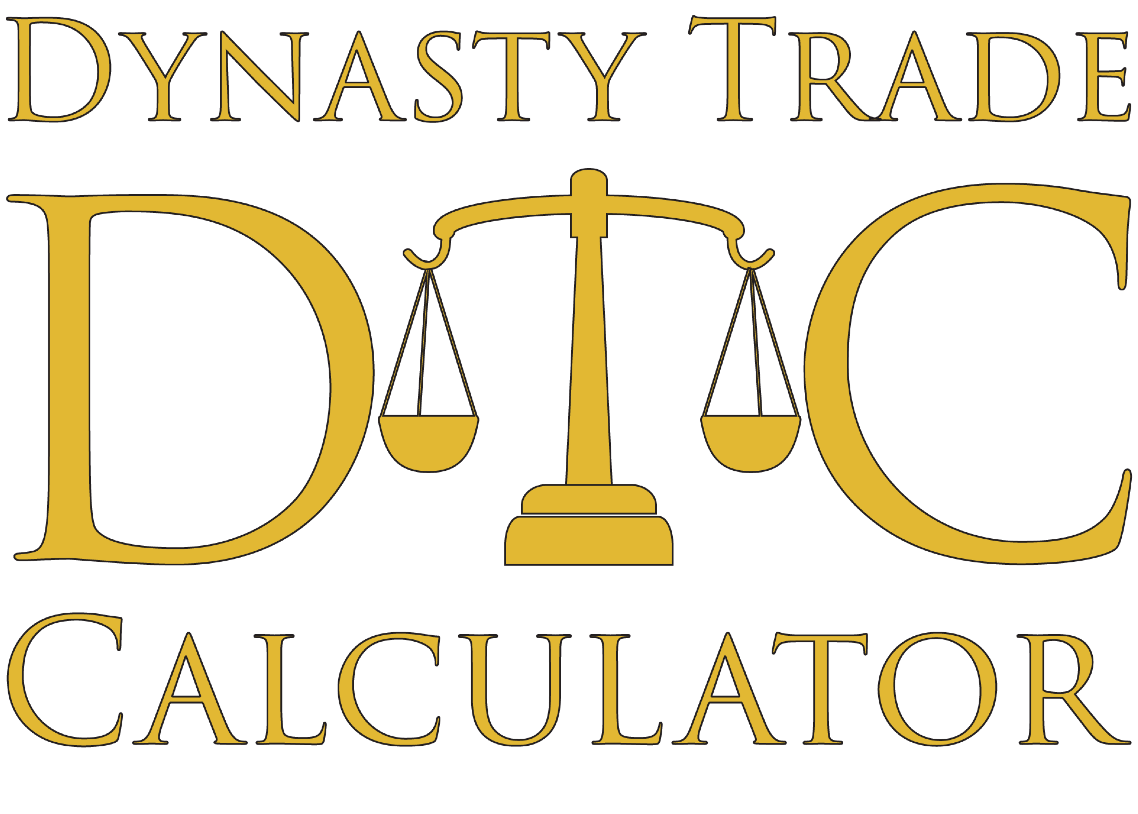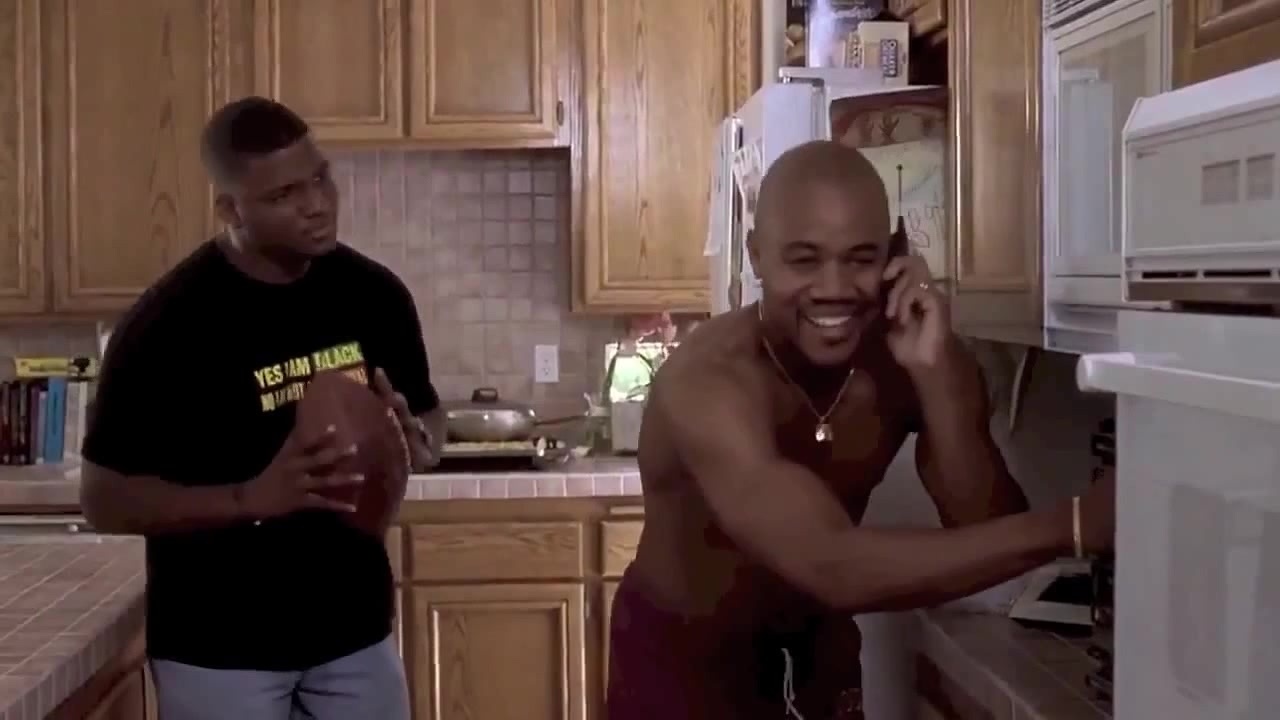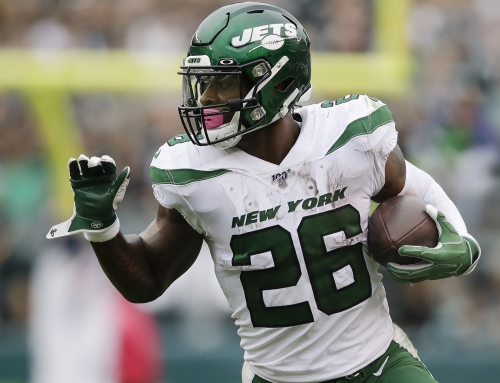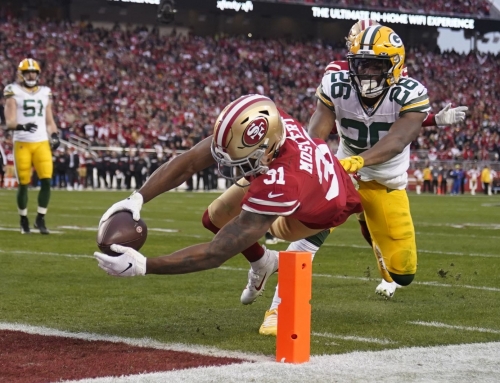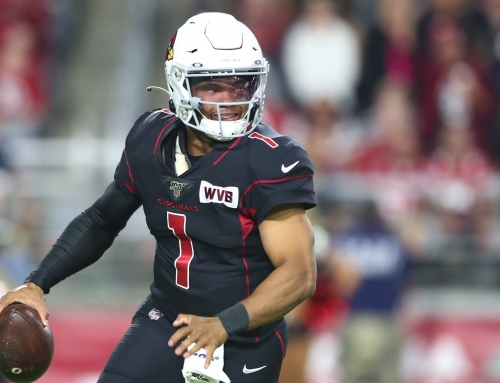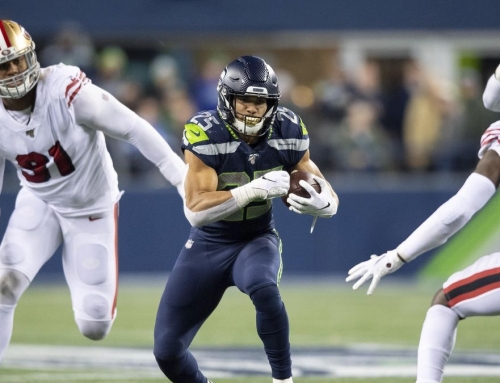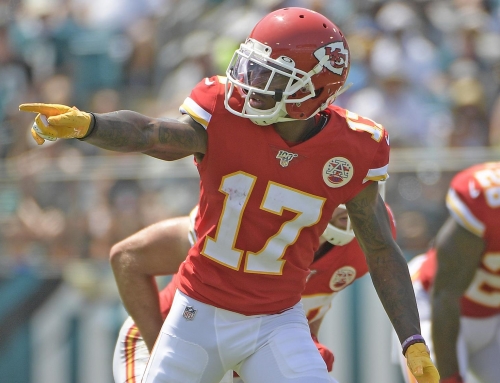Fantasy football, and dynasty in particular, bears many similarities to the stock market. Likewise, stock strategies can be applied to fantasy. Here are a few that could help win your league this coming season.
Trading for Value
It seems that many fantasy experts have similar, if not identical, rankings. With so much information easily accessible to everyone, how do you gain an advantage over the other owners in your league who likely follow many of the same experts and look at the same rankings and articles? While many experts use their own algorithms and criteria to evaluate and determine which players fall into their hierarchical totem pole of rankings, how different are they really? It’s important to understand that overall expert rankings vastly impact a player’s dynasty value, even if you disagree with the ranking itself.
Expert A may be very high on Leonard Fournette ranked at RB7 while Expert B might only have Fournette ranked at RB11. They probably both have perfectly valid reasoning, but does this small discrepancy in ranking really help you? This past year, you may have gotten lucky by picking Expert A’s RB6 in Christian McCaffrey, who subsequently helped you win your league championship. Expert A will forever get your vote of confidence because he had McCaffrey at the spot where you picked him. In all reality, you dodged a bullet by not taking Fournette, ranked at RB7 just one spot lower.
So how do you trade for value? Trading for value allows you to gain value in a trade regardless of whether you like the players (or positions) you are receiving. It’s creating value within your league by sometimes acting as the middle man while also receiving a sizable commission. It’s the 1031 tax-free exchange of the fantasy football world. Don’t get me wrong, rankings can be immensely useful in gauging value. More often than not, your odds of winning are much higher if your roster consists of multiple top-ranked players even if every year there are sleepers and waiver-wire prospects who break out and out-perform some of the top-ranked players.
But by trading for a highly-ranked player, you’re both increasing your odds of hitting on a productive player while also holding a valuable trading asset. Rookies and younger prospects who are drafted earlier in rookie drafts generally maintain trade value for far longer than their late-round counterparts, even if they fail to impress or produce early on in their careers.
Knowing Your League
It’s also crucial to understand your league mates’ valuations and tendencies. While walking down Wall Street may seem random at times, there are always those few unicorns who regularly beat the market. So how can we play the dynasty market and consistently win while walking down Dynasty Street? The secret is volume. You’ve all heard how “volume is king” in the fantasy world. Well, I’m not talking about carries, receptions, or targets. I’m talking about getting to know your audience with a lot of trade offers, counter-offers, twitter polls, trade calculators, and anything else you can get your hands on to better understand your fellow owners’ valuations and trade tendencies.
Finding actionable information is key, and for the most part, not as difficult to obtain as many would think. Certain owners tend to value draft picks highly, maybe even to the point of overvaluing them. Other owners have soft spots for players from their alma maters, like the one Clemson fan who drafted Deshaun Watson at 1.01 overall even in a 1QB league. The important part is remembering owners’ tendencies and finding the market inefficiencies between your values and theirs. It’s also prudent to avoid too many trades with owners who share valuations similar to yours, as it will be difficult to gain value in trades with them. You may avoid owners who have nearly identical opinions of players as you do. Here are some specific actions and tools that will help identify and exploit value differences:
Sending Offers
It seems simple, but sending a lot of trade offers out on a regular basis takes time and effort. Even if an offer is heavily in your favor and borderline offensive, you will gain a ton of value if for some slim chance it is accepted. Of course, it’s best not to send insulting offers for fear of burning bridges for future trades, but all starting offers should favor you. A good trade offer takes into account two things. First, are the players or draft picks you are offering to their liking, and second, is it close enough to evoke a counter-offer?
If you happen to offend anyone, you need to do a good job of letting them know that was not your intention, and that the two of you simply value the players in question differently. In fact, this is a good way to start a conversation. You may ask “what didn’t you like about the offer?” or “What can I add or substitute in this deal to make it work?” For example, I recently offered in one league Todd Gurley and Jordan Reed for James Conner and Melvin Gordon. While this may seem far off to some, the only deal breaker turned out to be that the other owner didn’t care for Reed, so we agreed on substituting in Chris Herndon instead. Had I not made the offer or asked the other owner what he didn’t like about the original deal, this trade never would’ve been completed.
Receiving trade offers can be powerful, too. Always create the perception that you are a person that loves to receive trade offers. Your goal is to gain information. Even if the trade offers are far off and worthy of a quick decline, thank the owner anyways for making the offer. Sometimes it’s best not to send a counter right away. If an owner continues to send you trade offers that involves the same player or players, then bingo! You know that’s who they’re really after. Sometimes the best response to an offer that doesn’t suit you can be, “I would need a little more, but thanks for the offer.” Just wait and see.
Twitter Polls
Use social media, and particularly Twitter, to your advantage. It’s easy to create an account. Even if you don’t tweet or don’t create a poll yourself, scrolling through other recent trades and offers will give you a good feel for who is hot and who is not. After viewing many trade polls this offseason, it was apparent that Dante Pettis, a player I owned in several leagues, was a hot commodity. I knew just the person to ship him off to.
You can plant the seeds of a future trade sometimes by screenshotting a Twitter poll and showing potential trade partners. “I didn’t know he was rising this much” or “I didn’t think he was this valuable” can be powerful motivators when paired with the right poll results. If you’ve ever read a negotiating book, you know that this is commonly referred to as “anchoring”. What you say doesn’t matter nearly as much as just saying it and showing the poll. It’s best to come off as sounding more like “look at this, it’s interesting” rather than “are you interested?”. Anchoring your player’s value highly can stick around in the other owner’s mind for a trade offer down the road.
Trade Calculators
Shameless plug: use our nifty Dynasty Trade Calculator to gauge player and draft pick values when you’re sending or receiving trade offers to see where you stand. DTC’s algorithm gives you the open market value so that you can see who is currently hot and who is not, creating opportunities to exploit value inefficiencies if you see a player you like valued lower than expected or vice versa.
Expert Rankings
While many expert rankings may have the top players ranked similarly, they can begin to vary greatly past the top tiers and prospects. Using most optimistic ranking to value your player and the most pessimistic rank to value another owner’s players when evaluating potential trades and even showing the difference to your potential trade partner can impact negotiations. More on this later…
Building Relationships
Unlike the stock exchange, where there are millions of trading partners every second, you only have a finite number of trade partners per league. It’s never a good idea to burn bridges and always beneficial to build and maintain at least a cordial, if not friendly relationship in fantasy football leagues. This holds especially true in dynasty, where you may be trading with these owners for years or decades to come. I’m not suggesting that you take your league mates out to brunch, but you should be interacting with them.
After nearly every trade goes down, I will send a message to at least one of the owners. I may say something like “let me know if you want to try to flip one of the players you just received”. A lot of times, this leads to an eventual trade that doesn’t even involve the players I originally asked about. Sometimes, compliments like “you got some really good value there” maintains that relationships and keeps you on their radar for future deals. I will always try to ask for their opinion, too. For example, if an owner in your league has a player that you have in another league, I will ask the owner for his or her thoughts on trade offers in the other league.
As we continue, I want to make one thing clear. You’re never trying to rip someone off. Extremely unbalanced trades create bitterness, and you may be breaking the golden rule of never burning bridges, not only with the owner who “lost” the trade but also with the rest of your league mates. Most of the trades that I have made are offers coming from the other owner, not from me. When another owner sends you an offer that you believe is in your favor, it’s a win-win, and everyone goes home happy. After all, it was their idea.
Insider Trading
Once you can gauge your league mates valuations and trading tendencies, it’s time to use that information for profit. Remember, while no rankings are foolproof or all-knowing, the more top-ranked players you have, the better your chances are to win your league. It is also a good idea to have specific experts that you trust to gauge what kind of value you are getting rather than using a difference set of rankings each time.
Ideally, you will have a general understanding of various experts’ rankings and preferences to use to your benefit. If Expert A ranks Marlon Mack at RB9 while Expert B has Mack at RB18, there are usually owners in your league as well whose valuations on Mack will vary. If you then own Mack in that league, it’s in your best interest to explore selling Mack to an owner whose valuation more closely follows that of Expert A at RB9.
Again, trading for value regardless of if you like the player you are receiving or not is an important principle to remember. Prior to selling Gurley for Gordon and Conner, I had acquired Gurley through a trade with a team in the playoffs that needed a big push in the championship while Gurley was hurt. So I offered Ezekiel Elliott and Antonio Brown for Gurley, Zach Ertz, and Tevin Coleman. After completing that trade, I immediately sought to improve my wide receivers by flipping him, as I knew his value likely wouldn’t get any higher. Of course, this was this past winter prior to the news that he might have long-term concerns with his knee.
Unfortunately, the owners in my league who had the elite receivers weren’t willing to sell at prices that would’ve gained me any profit, so instead, despite my need for receiver help, I traded for value. I sent an inordinate amount of offers to various owners to gauge interest, even trying to get Elliott back at one point. Most of my offers got declined and ignored, as most offers do, but due to the high volume, one eventually worked out, which was the aforementioned trade of Gurley and Herndon for Gordon and Conner.
Personally, I am not the biggest fan of Gordon or Conner in terms of dynasty assets, but I played the role of the middleman in which I could sell these highly-ranked players in the future for profit. Now I can use them as trade bait to acquire potentially undervalued players. Generally speaking, it’s unwise to overpay for a player though, even if you feel strongly about him. After all, the hit rate is low, and if you think you’re smarter than everyone else, you’re likely wrong.
If you do feel inclined to overpay for a player or draft pick, try to make it an asset with staying power so that you can get out on your investment at little loss if needed. I attempted to flip Gordon and Conner for Odell Beckham, Dalvin Cook, and Tyler Boyd. While the Beckham owner declined, this began trade talks. Now remember how I had Pettis on this team and knew the right owner to which I could sell him? I knew that because I kept getting trade offers that involved Pettis. I eventually sent out an offer of Pettis and the 1.08 rookie pick for DJ Moore and an early 2020 second-round pick. Later this offseason, the same owner wanted Moore back and subsequently offered the 1.05 and 1.08 rookie picks for Moore. The net of the two trades was Pettis for the 1.05 rookie pick and an early 2020 second-round pick.
Now I played the middle man and took my commissions check to the bank. I suggested I that could add the recently-acquired 1.08 rookie pick and early 2020 second-round pick for their 2020 first-round pick. The rest is history. All in all, I sold Gordon, Conner, the 1.08 rookie pick, and the 2020 second-round pick for Beckham, Cook, Boyd, and a 2020 first-round pick. This all began late in the season with the Gurley trade, and only months later did the profit come to fruition.
Trading for value and knowing your league are the most important tools a dynasty owner can learn to use. Your goal should be to constantly use the information you have to trade for profit. It sounds simple but can take practice. Once mastered though, these skills will help you consistently win championships and create a true dynasty.
